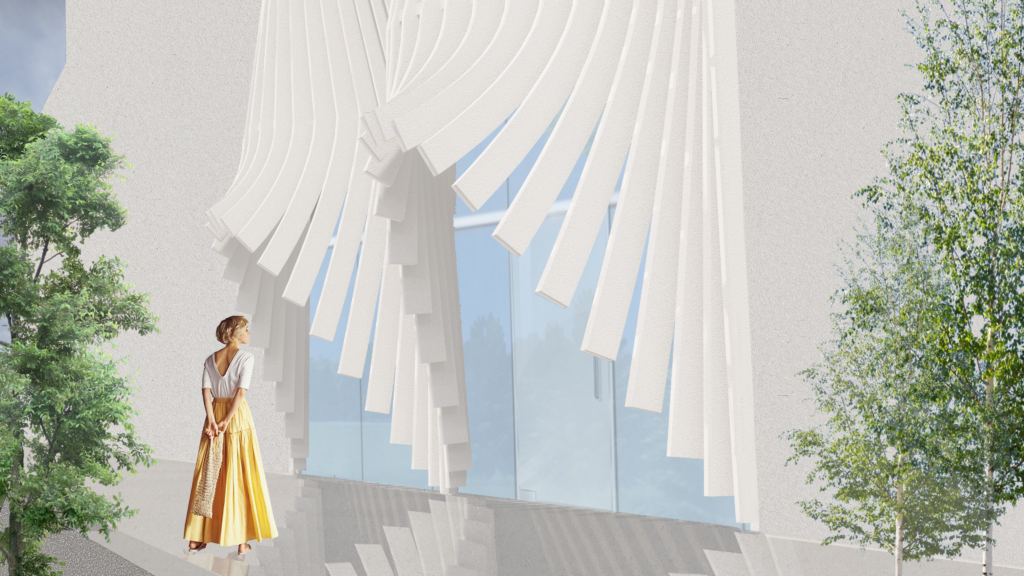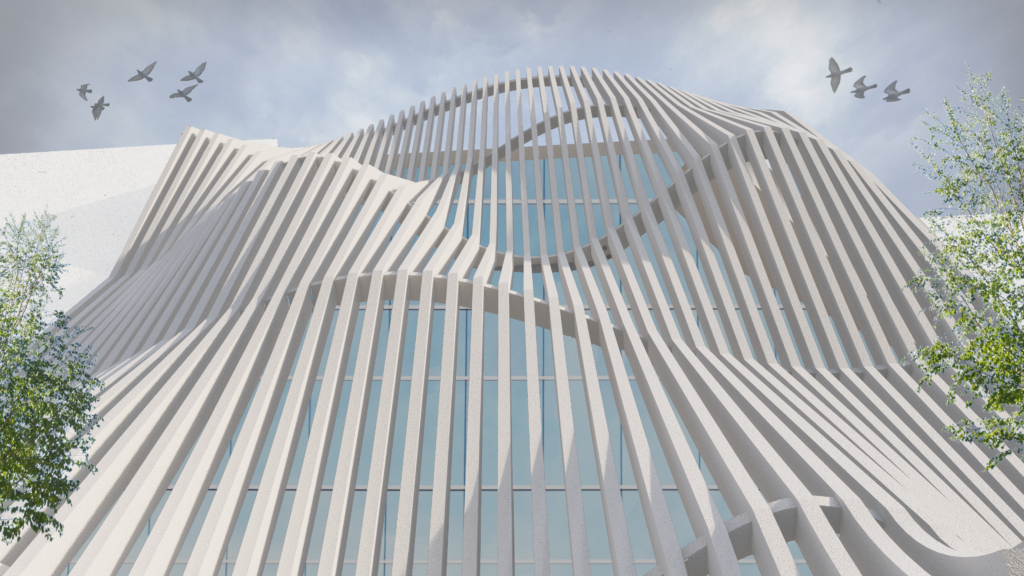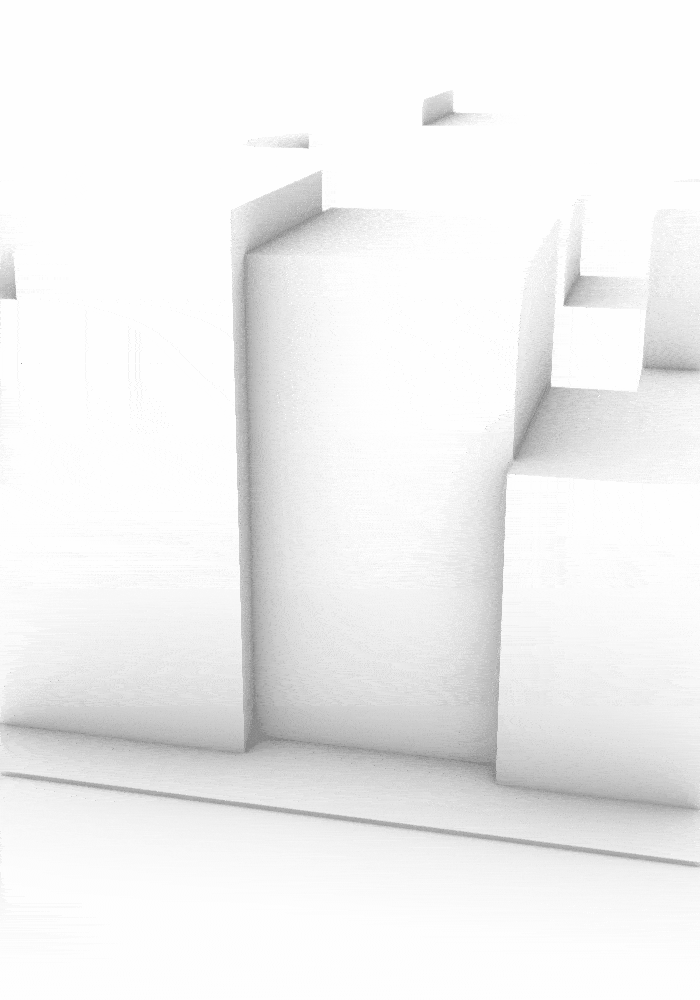Wave Harmony
This project, developed in Grasshopper for computational design exploration, is a conceptual model showcasing dynamic forms through vertical fins that mimic movement and fluidity. The design creates a rhythmic interplay of light and shadow across the façade, balancing transparency and opacity. The cascading ribbon-like entrance enhances the visual and spatial experience, transforming the threshold into a sculptural, inviting element. The model demonstrates how computational tools can be used to study and adapt complex geometries, providing opportunities for creative reinterpretation of architectural principles. This approach highlights the power of parametric design to achieve precise control over aesthetic and environmental outcomes, pushing the boundaries of contemporary urban architecture.
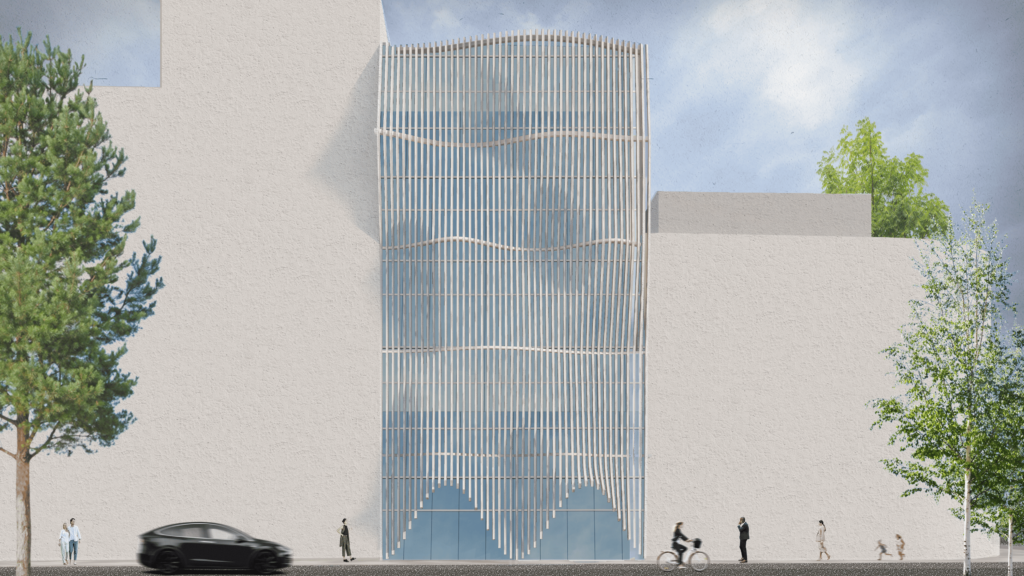
References
Our design is inspired by the dynamic interplay of geometry, rhythm, and fluidity seen in the references. The façade’s undulating slats and reflective surface emphasize motion and light interaction, while the parametric sine-wave patterns demonstrate how mathematical modulation creates organic forms. Combining these, we explore how algorithmic processes transform simple geometries into compelling, flexible designs.
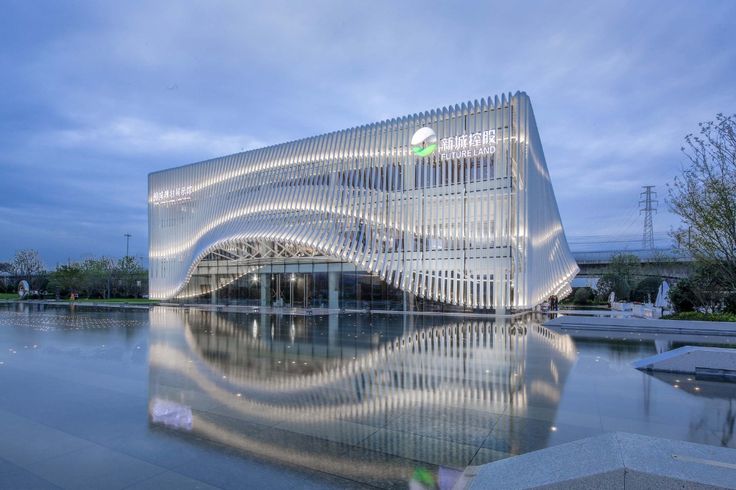
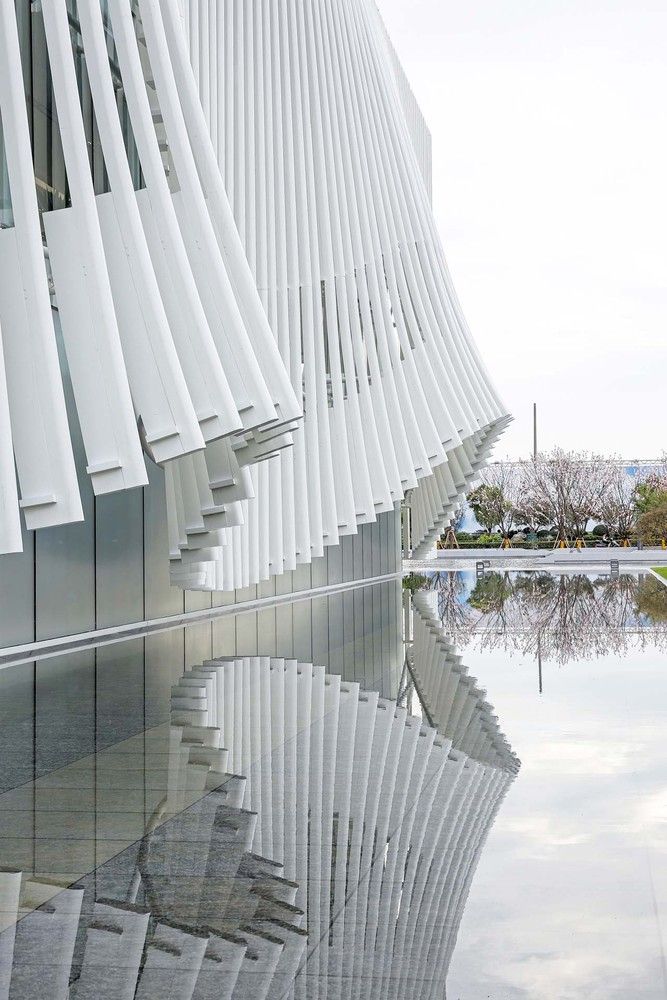
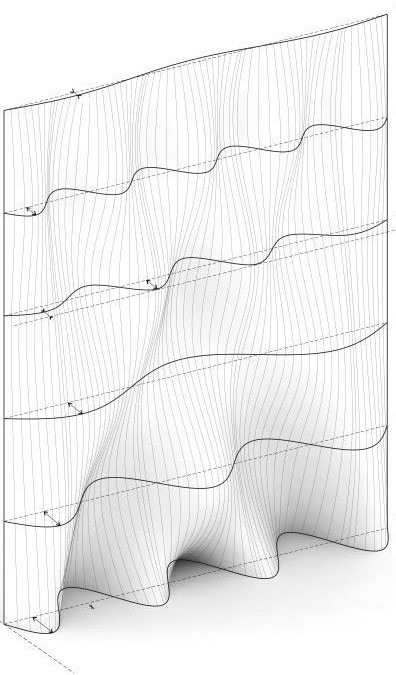
Work Logics
To create this kind of design in Grasshopper, the workflow would involve generating a base rectangular grid or façade geometry, followed by applying a sinusoidal or wave function to deform the vertical elements along the façade. The deformation logic would depend on a parameter, such as height or a control curve, to create the flowing wave pattern. Finally, the adjusted vertical elements are arrayed or lofted to create the rhythmic, dynamic façade.
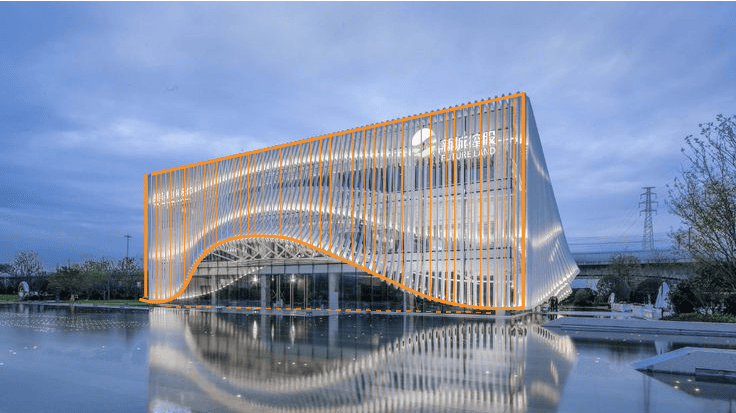

- Set Dimensions: Define the facade dimensions and divide it into points.
- Add Wave: Apply a sine function to adjust point heights.
- Multiply waves and connect: Connect points with curves, then loft to create a wavy surface.
- Adjust: Use sliders to tweak dimensions and wave properties.
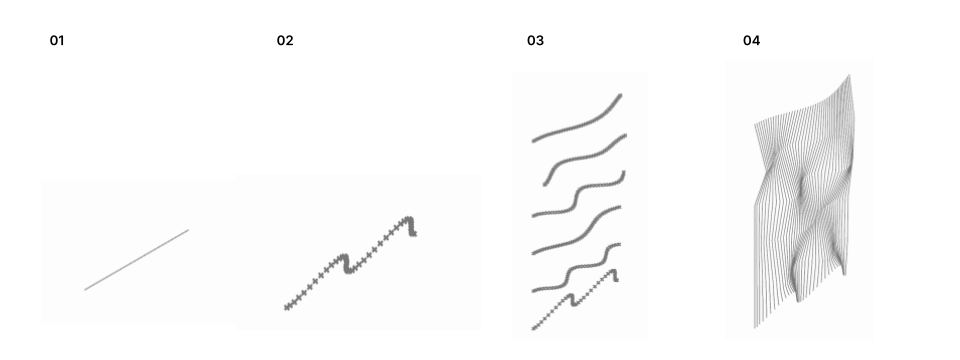
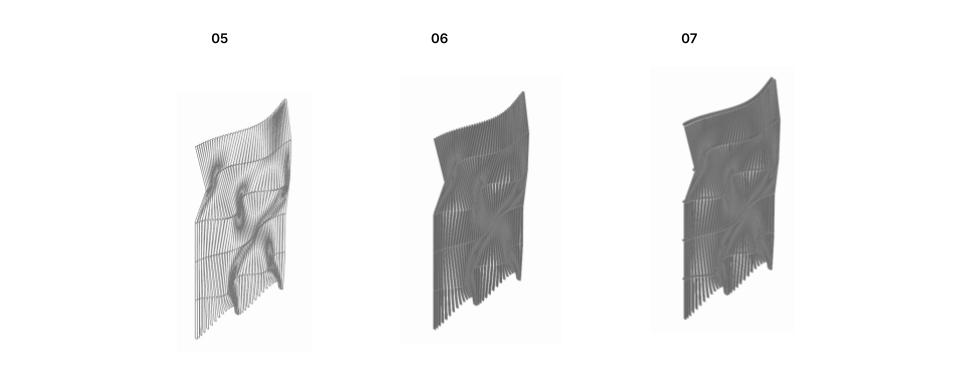
Pseudo Code
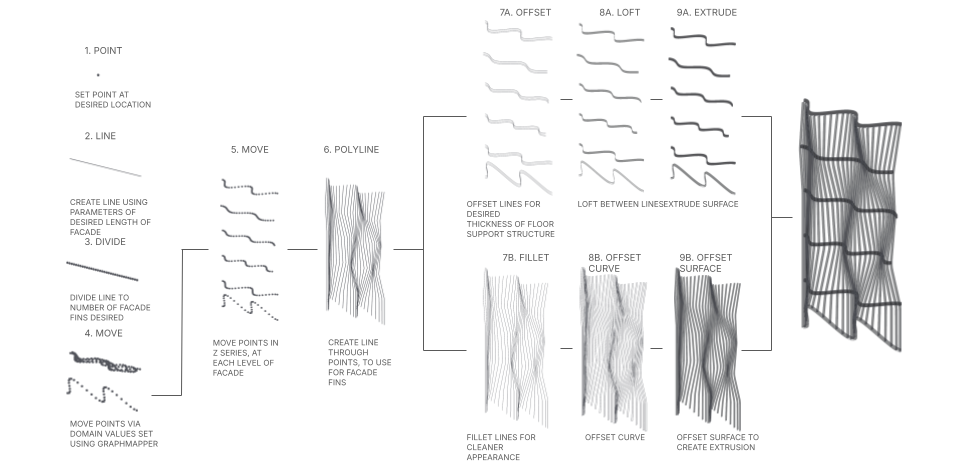
Grasshopper Code
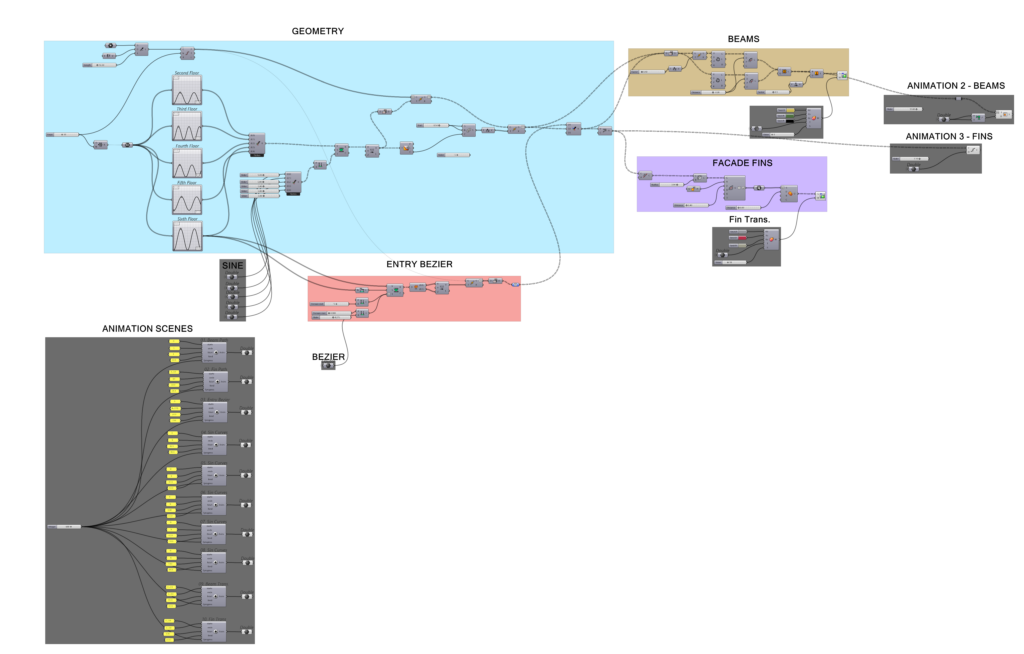
Design Iterations

Iteration 1
This diagram illustrates the initial phase of the building’s design evolution, where linear layers of structural components are methodically warped along a single axis. The curvature introduces dynamic movement while maintaining an orderly, grid-like structure.
Iteration 2
This stage showcases a progressive alteration of the initial geometry, focusing on the vertical expansion and subtle horizontal curvatures. The adjustments emphasize the tension and continuity of the form, adding complexity and depth to the structure.
Iteration 3
Here, the alteration exhibits a more dynamic and chaotic surface with sharper, irregular waves and denser ridges, creating a sense of movement and tension. In contrast
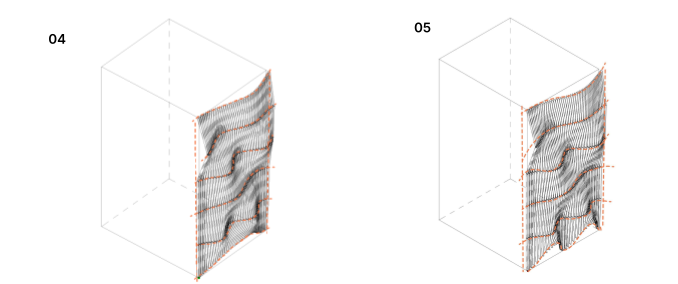
Iteration 4
This alteration features a smoother and more uniform wave pattern, with gentle transitions that give it a more harmonious and controlled aesthetic.
Iteration 5
Here, the design evolves with the introduction of contoured segmentation. Each level’s boundary appears independently shaped, forming an undulating profile. The design emphasizes fluidity and organic character, enhancing visual rhythm and harmony. We also added 2 entrances instead of just 1.
Result

